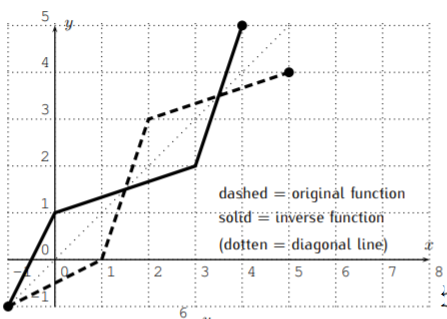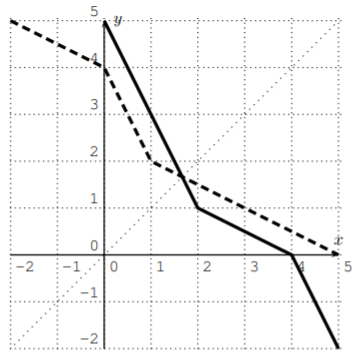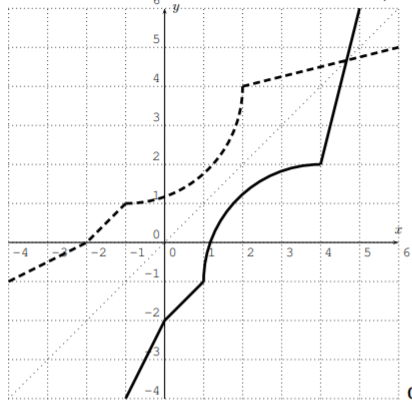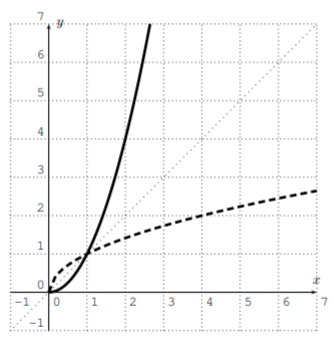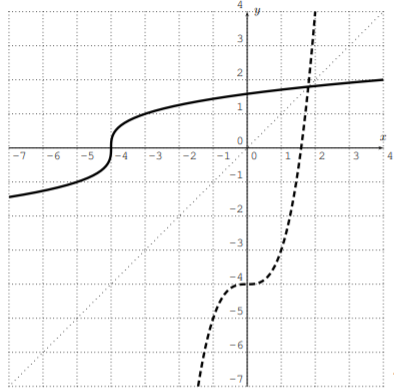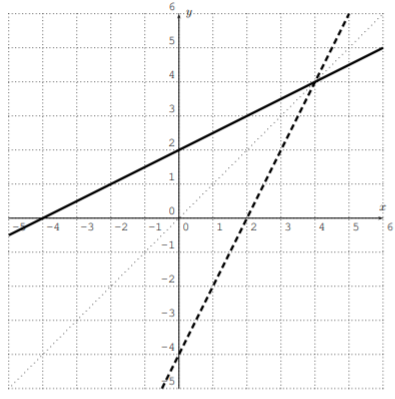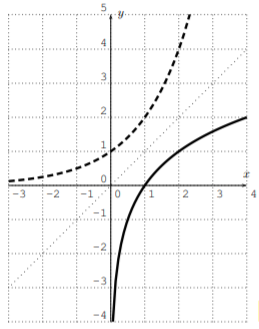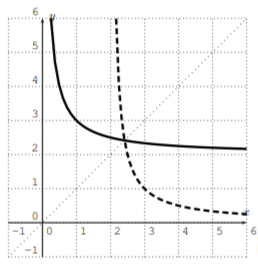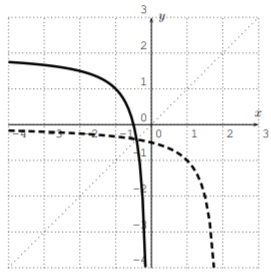7.3: Ejercicios
- Page ID
- 117800
\( \newcommand{\vecs}[1]{\overset { \scriptstyle \rightharpoonup} {\mathbf{#1}} } \) \( \newcommand{\vecd}[1]{\overset{-\!-\!\rightharpoonup}{\vphantom{a}\smash {#1}}} \)\(\newcommand{\id}{\mathrm{id}}\) \( \newcommand{\Span}{\mathrm{span}}\) \( \newcommand{\kernel}{\mathrm{null}\,}\) \( \newcommand{\range}{\mathrm{range}\,}\) \( \newcommand{\RealPart}{\mathrm{Re}}\) \( \newcommand{\ImaginaryPart}{\mathrm{Im}}\) \( \newcommand{\Argument}{\mathrm{Arg}}\) \( \newcommand{\norm}[1]{\| #1 \|}\) \( \newcommand{\inner}[2]{\langle #1, #2 \rangle}\) \( \newcommand{\Span}{\mathrm{span}}\) \(\newcommand{\id}{\mathrm{id}}\) \( \newcommand{\Span}{\mathrm{span}}\) \( \newcommand{\kernel}{\mathrm{null}\,}\) \( \newcommand{\range}{\mathrm{range}\,}\) \( \newcommand{\RealPart}{\mathrm{Re}}\) \( \newcommand{\ImaginaryPart}{\mathrm{Im}}\) \( \newcommand{\Argument}{\mathrm{Arg}}\) \( \newcommand{\norm}[1]{\| #1 \|}\) \( \newcommand{\inner}[2]{\langle #1, #2 \rangle}\) \( \newcommand{\Span}{\mathrm{span}}\)\(\newcommand{\AA}{\unicode[.8,0]{x212B}}\)
Utilice la prueba de línea horizontal para determinar si la función es uno a uno.
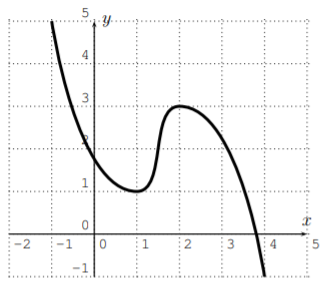
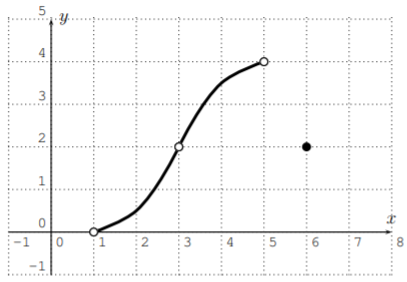
- \(f(x)=x^2+2x+5\)
- \(f(x)=x^2-14 x+29\)
- \(f(x)=x^3-5x^2\)
- \(f(x)=\dfrac{x^2}{x^2-3}\)
- \(f(x)=\sqrt{x+2}\)
- \(f(x)=\sqrt{|x+2|}\)
- Contestar
-
- no (es decir: la función no es uno-a-uno)
- si
- no
- no
- no
- no
- si
- no
Encuentra la inversa de la función\(f\) y comprueba tu solución.
- \(f(x)=4x+9\)
- \(f(x)=-8x-3\)
- \(f(x)=\sqrt{x+8}\)
- \(f(x)=\sqrt{3x+7}\)
- \(f(x)=6\cdot \sqrt{-x-2}\)
- \(f(x)=x^3\)
- \(f(x)=(2x+5)^3\)
- \(f(x)=2\cdot x^3+5\)
- \(f(x)=\dfrac{1}{x}\)
- \(f(x)=\dfrac{1}{x-1}\)
- \(f(x)=\dfrac{1}{\sqrt{x-2}}\)
- \(f(x)=\dfrac{-5}{4-x}\)
- \(f(x)=\dfrac{x}{x+2}\)
- \(f(x)=\dfrac{3x}{x-6}\)
- \(f(x)=\dfrac{x+2}{x+3}\)
- \(f(x)=\dfrac{7-x}{x-5}\)
- \(f\)dado por la tabla:\ (\ begin {array} {|c||c|c|c|c|c|c|c|}
\ hline x & 2 & 4 & 6 & 8 & 10 & 12\
\ hline\ hline\ hline f (x) & 3 & 7 & 1 & 8 & 5 & 2\
\ hline
\ end {array}\)
- Contestar
-
- \(f^{-1}(x)=\dfrac{x-9}{4}\)
- \(f^{-1}(x)=-\dfrac{x+3}{8}\)
- \(f^{-1}(x)=x^{2}-8\)
- \(f^{-1}(x)=\dfrac{x^{2}-7}{3}\)
- \(f^{-1}(x)=-\left(\dfrac{x}{6}\right)^{2}-2=\dfrac{-x^{2}-72}{36}\)
- \(f^{-1}(x)=\sqrt[3]{x}\)
- \(f^{-1}(x)=\dfrac{\sqrt[3]{x}-5}{2}\)
- \(f^{-1}(x)=\sqrt[3]{\dfrac{x-5}{2}}\)
- \(f^{-1}(x)=\dfrac{1}{x}+1=\dfrac{1+x}{x}\)
- \(f^{-1}(x)=\left(\dfrac{1}{x}\right)^{2}+2=\dfrac{1+2 x^{2}}{x^{2}}\)
- \(f^{-1}(x)=\dfrac{5}{y}+4=\dfrac{5+4 y}{y}\)
- \(f^{-1}(x)=\dfrac{5}{y}+4=\dfrac{5+4 y}{y}\)
- \(f^{-1}(x)=\dfrac{2 x}{1-x}\)
- \(f^{-1}(x)=\dfrac{6 x}{x-3}\)
- \(f^{-1}(x)=\dfrac{2-3 x}{x-1}\)
- \(f^{-1}(x)=\dfrac{5 x+7}{x+1}\)
- \ (\ begin {array} {|c||c|c|c|c|c|c|c|}
\ hline x & 3 & 7 & 1 & 8 & 5 & 2\
\ hline\ hline\ hline f^ {-1} (x) & 2 & 4 & 6 & 8 & 10 & 12\
\ hline
\ end {array}\)
Restringir el dominio de\(f\) la función de tal manera que\(f\) se convierta en una función uno a uno. Encuentra la inversa de\(f\) con el dominio restringido.
- \(f(x)=x^2\)
- \(f(x)=(x+5)^2+1\)
- \(f(x)=|x|\)
- \(f(x)=|x-4|-2\)
- \(f(x)=\dfrac{1}{x^2}\)
- \(f(x)=\dfrac{-3}{(x+7)^2}\)
- \(f(x)=x^4\)
- \(f(x)=\dfrac{(x-3)^4}{10}\)
- Contestar
-
- restringir al dominio\(D=[0, \infty)\) da la inversa\(f^{-1}(x)=\sqrt{x}\)
- restringir al dominio\(D=[-5, \infty)\) da la inversa\(f^{-1}(x)=\sqrt{x-1}-5\)
- restringir al dominio\(D=[0, \infty)\) da la inversa\(f^{-1}(x)=x\)
- restringir al dominio\(D=[4, \infty)\) da la inversa\(f^{-1}(x)=x+6\)
- restringir al dominio\(D=[0, \infty)\) da la inversa\(f^{-1}(x)=\sqrt{\dfrac{1}{x}}\)
- restringir al dominio\(D=[-7, \infty)\) da la inversa\(f^{-1}(x)=\sqrt{-\dfrac{3}{x}}-7\)
- restringir al dominio\(D=[0, \infty)\) da la inversa\(f^{-1}(x)=\sqrt[4]{x}\)
- restringir al dominio\(D=[3, \infty)\) da la inversa\(f^{-1}(x)=3+\sqrt[4]{10 x}\)
Determinar si las siguientes funciones\(f\) y\(g\) son inversas entre sí.
- \(f(x)=x+3, \quad g(x)=x-3\),
- \(f(x)=-x-4, \quad g(x)=4-x\),
- \(f(x)=2x+3, \quad g(x)=x-\dfrac{3}{2}\),
- \(f(x)=6x-1, \quad g(x)=\dfrac{x+1}{6}\),
- \(f(x)=x^3-5, \quad g(x)= 5+\sqrt[3]{x}\),
- \(f(x)=\dfrac{1}{x-2}, \quad g(x)=\dfrac{1}{x}+2\).
- Contestar
-
- sí (es decir: las funciones f y g son inversas entre sí)
- no
- no
- si
- no
- si
Dibuja la gráfica de la inversa de la función dada a continuación.
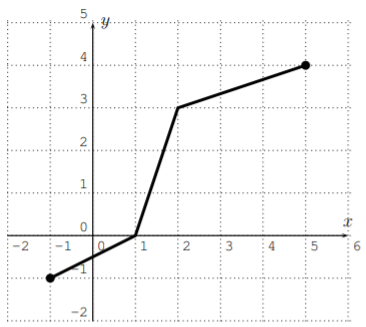
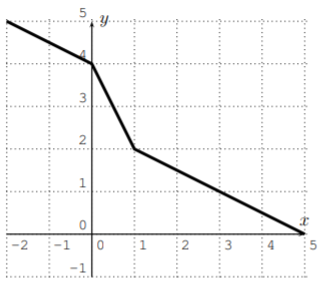
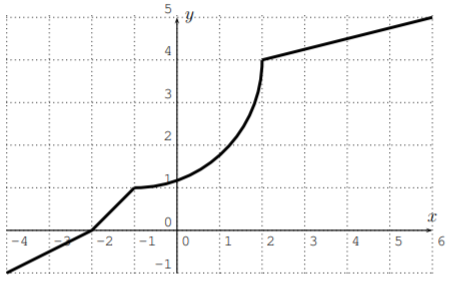
- \(f(x)=\sqrt{x}\)
- \(f(x)=x^3-4\)
- \(f(x)=2x-4\)
- \(f(x)=2^x\)
- \(f(x)=\dfrac{1}{x-2}\)para\(x>2\)
- \(f(x)=\dfrac{1}{x-2}\)para\(x<2\)
- Contestar
-



